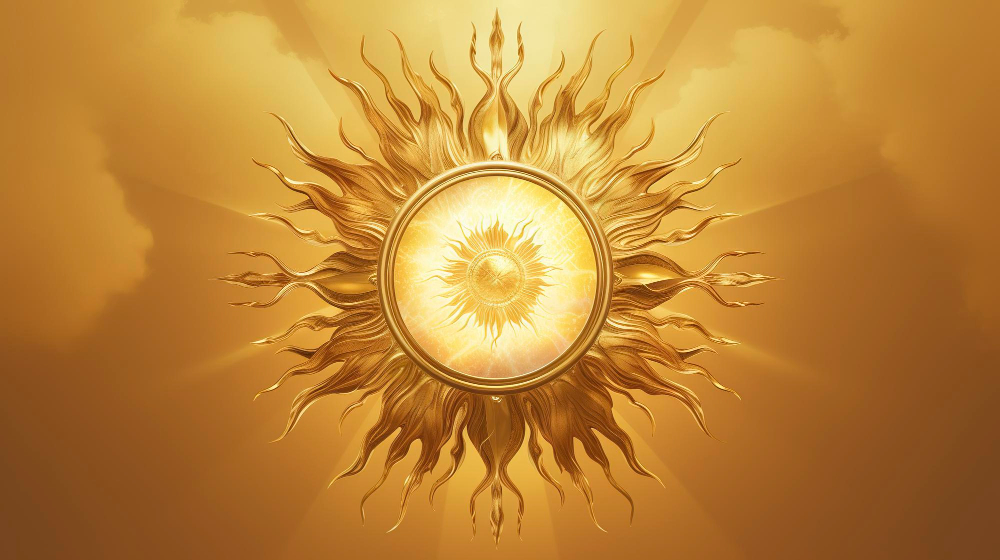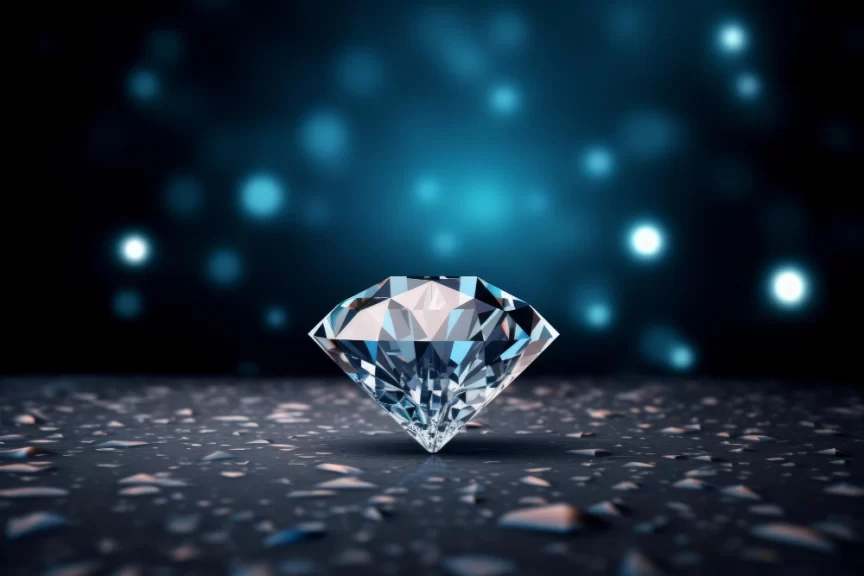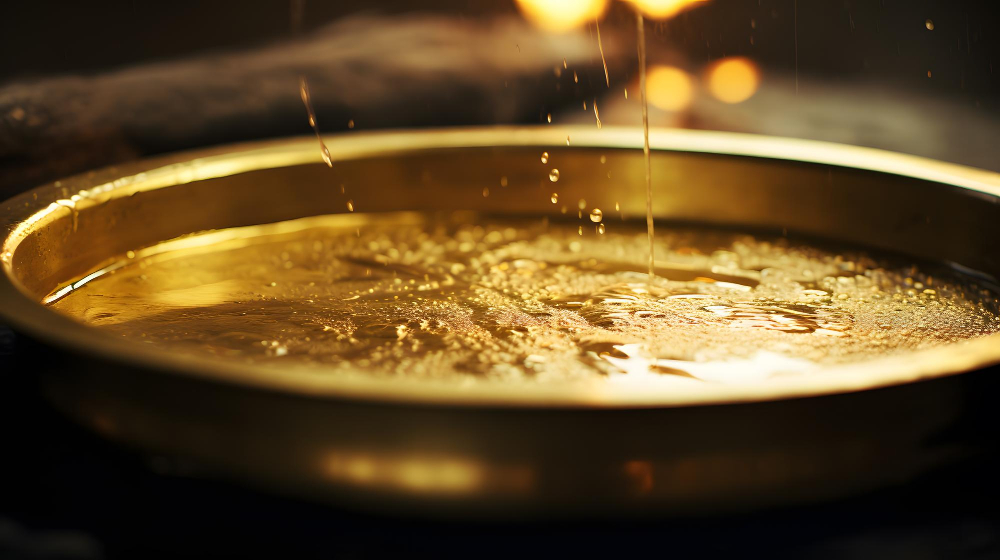You think gold and diamond are the same old sparkly stuff? Think again. One little letter makes a big difference between karats and carats. Are you aware of gold and diamond purity? Karats measure gold purity while carats measure diamond weights. And the numbers matter more than you’d think. Pure 24-karat gold is so soft it can’t hold its shape for jewelry. Rare, high-carat diamonds command sky-high prices. Read on to go behind the bling and uncover what those tiny numbers on gold and diamond jewelry really mean. You’ll be dropping knowledge on your friends at the next cocktail party about the gold and diamond purity
gold and diamond purity
Gold as a Symbol of the Sun
The sun has been worshiped throughout history, so gold’s yellow radiance has long been associated with solar deities and royalty. Ancient Egyptians believed gold was the flesh of the sun gods. In many cultures, gold represented an eternal, indestructible metal and was revered for its beauty and purity.

The Difference Between Karat and Carat
A karat and a carat refer to very different measurements, though their spellings differ by only one letter.
The Carat: A Measure of Diamond Clarity
The term “carat” applies to diamonds and is considered one of the 4C’s of Quality measurement (carat, color, clarity, and cut). It is a unit of measurement when weighting precious stones that was established a hundred years ago like diamonds and gemstones. According to the established standard, a diamond weighing one carat is determined to be equivalent to 200 milligrams or 0.2 grams in finished weight. Thus, it follows that as the carat weight increases, so does the size of the diamonds or precious stones.

Karatage: Understanding Gold Purity in Jewelry
Karatage refers to the gold purity in jewelry. It is measured by the proportion of gold in a scale of 24 parts. For example, 24 karat gold indicate that all 24 parts of the metal mixture are gold, making it 100% pure. Nevertheless, the majority of gold jewelry isn’t crafted from 24 karat pure gold, as it’s deemed too soft for regular wear. Instead, jewelry is often made from 10k to 24k gold, with 20-karat gold being commonly used in high-quality pieces.
Common standards of fineness used include:
0.833 = 20 carat
0.999 (1000) = 24 Karat pure gold
Karat is also used to describe different types of gold alloys, such as yellow gold, white gold, and rose gold. The color of the gold is achieved by altering the proportions of pure gold and other metals.
The gold chart provides examples of the composition of different carats of gold.
| Type | Karats | Gold (%) | Silver (%) | Copper (%) | Other (%) |
| Yellow Gold | 14k | 58.3 | 30 | 11.7 | |
| Yellow Gold | 18k | 75 | 15 | 10 | |
| Yellow Gold | 22k | 91.7 | 5 | 2 | 1.3 |
| White Gold | 18k | 75 | 25 (or Pt) |
Why 24k Gold is a Rarity in Jewelry
24-karat gold, despite its purity is seldom used in its natural state for jewelry. This is due to gold’s innate softness, which renders it susceptible to damage from even minor abrasions. Continuous wear of 24K gold would lead to gradual flaking until little remains. Consequently, high-end gold jewelry typically employs a maximum of 20K gold, consisting of 83.3% gold and a blend of other metals like copper, zinc, silver, and nickel (depending on the desired color—yellow, rose, or white).
Yellow gold remains a popular choice, the modern gold palette offers a diverse array of colors. This variety is achieved through alloying, a process of mixing other metals with pure 24 carat gold, which not only enhances its durability but also alters its color profile.

For instance, white gold is created by alloying pure gold with white metals like palladium or silver. The addition of copper gives rise to the soft pink hue of rose gold, while more unique colors such as blue and purple can be attained through the introduction of patinas or oxides to the alloy surface. Notably, black gold obtains its distinctive color from cobalt oxide.
The Exceptional Rarity of Diamonds
The carat weight refers to a diamond’s size, not its quality. Large, high-carat diamonds are rare in nature, as most rough diamonds are small. Only about 1 in 1 million diamonds is over 1 carat.
Diamonds are truly nature’s marvels, formed over millions of years deep within the Earth’s mantle. Their rarity is unparalleled, with only a minuscule fraction of mined rocks yielding these precious gems. It’s estimated that for every one million carats of diamonds mined, only about one carat is of gem quality.
This scarcity is further magnified in larger stones, where the likelihood of finding diamonds exceeding a carat in weight diminishes drastically. Consequently, the value of diamonds increases exponentially with size, making these exquisite gems not just a symbol of beauty, but also a testament to the extraordinary forces of nature and the remarkable odds of their discovery.
Conclusion
So next time you’re in the market for some bling, remember that karats measure gold while carats measure gems. When it comes to gold, 24k is pure but more expensive and delicate than lower karats. With diamonds, a higher carat indicates a larger, rarer stone.
Understanding karats and carats empowers you to navigate the sparkling world of jewelry. With newfound knowledge, you can appreciate the craftsmanship behind gold’s purity and the awe-inspiring rarity of diamonds.
Whether you prefer traditional gold jewelry or modern diamond pieces, understanding these units helps you make informed choices about quality and cost. And isn’t that what we all want? To make sure our hard-earned money gets us the best sparkle for the buck.
About Us
At Harit Jewellers (MMTC-PAMP Authorised Distributors), we curate a collection inspired by this timeless legacy. We invite you to explore our exquisite Jewellery. Timeless design meets the rich heritage of craftsmanship. Experience unrivaled gold and diamond purity at Harit Jewellers, where Purity is Priority.
- Explore more on Instagram: Harit Jewellers
- Discover on Facebook: Harit Jewellers
- Watch on YouTube: Harit Jewellers






